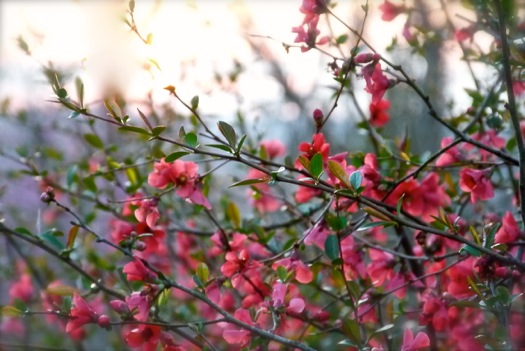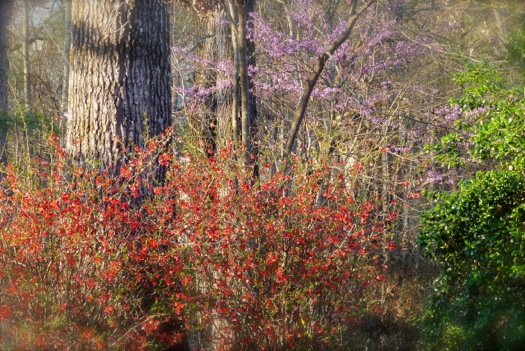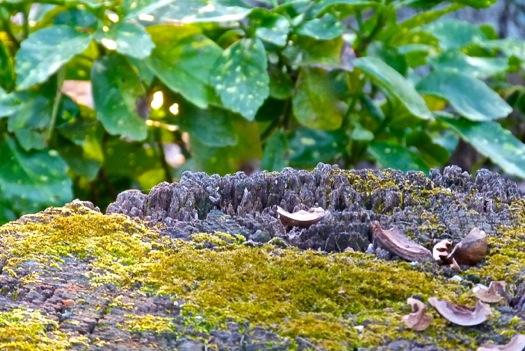The Magic of Trilliums
 Sunday, April 29, 2018 at 10:45PM
Sunday, April 29, 2018 at 10:45PM Half of my woodland garden came into being because of a patch of trilliums.  Eight years ago I discovered trilliums growing near a "dog trot" trampled through the weeds in an area adjacent to the woodland garden. Well, now. Trilliums are pretty special. Before the year was over, I had widened the trail into a real path so that I could easily access those trilliums. I connected the path to the main woodland garden and started adding ferns, native azaleas, Japanese maples, camellias, and all sorts of other woodland plants to the space. Eventually I created a new sitting area and had an enormous "sitting rock" hauled in as a focal point. All because of a patch of trilliums...
Eight years ago I discovered trilliums growing near a "dog trot" trampled through the weeds in an area adjacent to the woodland garden. Well, now. Trilliums are pretty special. Before the year was over, I had widened the trail into a real path so that I could easily access those trilliums. I connected the path to the main woodland garden and started adding ferns, native azaleas, Japanese maples, camellias, and all sorts of other woodland plants to the space. Eventually I created a new sitting area and had an enormous "sitting rock" hauled in as a focal point. All because of a patch of trilliums...
Trilliums are rhizomatous, deciduous perennials native to North America.  They grow in deep to partial shade in well-drained, loamy soil high in organic matter. There are over 30 different species. They all have a whorl of three leaves from which arises a solitary, three-petaled flower. The leaves and flower colors will vary by species. They are often described as spring ephemerals, meaning that they come up each spring, then quickly bloom and produce seed. By mid-summer the leaves have withered, and only the unseen underground parts remain. The seeds produce small fruits that attract ants. The ants help to spread the trillium seeds by carrying the fruits to their nest. They eat the fruits but discard the seeds as trash. If the soil is suitable, the seed will germinate.
They grow in deep to partial shade in well-drained, loamy soil high in organic matter. There are over 30 different species. They all have a whorl of three leaves from which arises a solitary, three-petaled flower. The leaves and flower colors will vary by species. They are often described as spring ephemerals, meaning that they come up each spring, then quickly bloom and produce seed. By mid-summer the leaves have withered, and only the unseen underground parts remain. The seeds produce small fruits that attract ants. The ants help to spread the trillium seeds by carrying the fruits to their nest. They eat the fruits but discard the seeds as trash. If the soil is suitable, the seed will germinate.
Trillium cuneatum, also called Toadshade, the wood lily or Sweet Betsy, grows wild on my property.

This trillium is native to the southeastern US. I love its maroon flowers, as well as its variegated leaves and striking maroon stems. However, trillium "leaves" are actually bracts supporting the flower, and the "stem" is actually an extension of the horizontal, underground rhizome.
One should never pick trilliums. Some trilliums are endangered, and picking may be illegal. If the leaf-like bracts are picked, the trillium is unable to produce food for next year, and it will die. Always purchase nursery-raised trilliums from reputable garden shops. They should never be dug from the wild.
I think the best way to enjoy trilliums is use them as an excuse to take a nature walk with friends and relatives and to photograph them!
You may also enjoy reading my older post about how I began this part of my woodland garden: A New Woodland Path

















